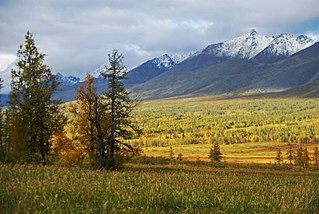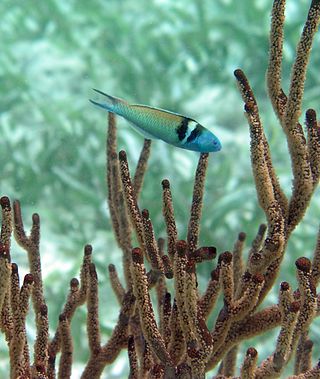
A national park is a natural park in use for conservation purposes, created and protected by national governments. Often it is a reserve of natural, semi-natural, or developed land that a government declares or owns. Although individual countries designate their own national parks differently, there is a common idea: the conservation of 'wild nature' for posterity and as a symbol of national pride. National parks are almost always open to visitors.

A nature reserve is a protected area of importance for flora, fauna, or features of geological or other special interest, which is reserved and managed for purposes of conservation and to provide special opportunities for study or research. They may be designated by government institutions in some countries, or by private landowners, such as charities and research institutions. Nature reserves fall into different IUCN categories depending on the level of protection afforded by local laws. Normally it is more strictly protected than a nature park. Various jurisdictions may use other terminology, such as ecological protection area or private protected area in legislation and in official titles of the reserves.

Białowieża Forest is a forest on the border between Belarus and Poland. It is one of the last and largest remaining parts of the immense primeval forest that once stretched across the European Plain. The forest is home to 800 European bison, Europe's heaviest land animal. UNESCO's Man and the Biosphere Programme designated the Polish Biosphere Reserve Białowieża in 1976 and the Belarusian Biosphere Reserve Biełavieskaja pušča in 1993.
Belaya Vezha may refer to:

Belovezhskaya Pushcha National Park is a national park within parts of the Brest Region and Grodno Region in Belarus adjacent to the Polish border. Since 1992 it is a preserved part of the UNESCO World Heritage Site Białowieża Forest, the last primeval forest fragment of the European woodlands that once stretched across the European Plain. It is home to a large population of European bison, the continent's heaviest land animals. The border between the two countries runs through the forest with the Białowieża National Park on the Polish side of the border. Since May 2015 there has been a visa-free regime within the forest for hikers and cyclists at the Pierarova-Białowieża border crossing.

There are currently 64 national parks in Russia. Together they cover approximately 155,672 square kilometers (60,105 sq mi).

The Tower of Kamianiec, often called by the misnomer the White Tower, is the main landmark of the town of Kamyenyets in Belarus. The name Bielaja Vieža, which literally means White Tower or White Fortress in Belarusian, presumably derives from the tower's proximity to the Belavezhskaya Pushcha Forest, but not from its color, which has been brick-red through the ages, never white.

The environment of Azerbaijan, includes a wide diversity of climates, animals, plants, and habitats.

Białowieża National Park is a national park in Podlaskie Voivodeship, in Eastern Poland adjacent with the border with Belarus. The total area of the park is 105.2 square kilometres (40.6 sq mi). It is located 62 km (39 mi) southeast of Białystok (Poland). It is known for the protection of the best preserved part of the Białowieża Forest, Europe's last temperate primaeval forest fragment that once allegedly stretched across the European Plain. It is home to the world's largest population of European bison, the continent's heaviest land animals. The border between the two countries runs through the forest, the Belovezhskaya Pushcha National Park is adjacent on the Belarus side of the border. There is a border crossing for hikers and cyclists within the forest. According to one study, the park brings in tourist revenues of about 72 million zloty per year.
National parks of Azerbaijan are run by the Ministry of Ecology and Natural Resources in the Republic of Azerbaijan. The first national park established was Zangezur National Park in 2003. Since then a further 9 national parks have been established; the most recent being the Gizilaghaj National Park in 2018.

There are several types of protected areas of the Czech Republic. The main form of landscape protection is delimitation of special protected areas. All the types of protected areas are determined by law.

Since declaring independence in 1981, Belize has enacted many environmental protection laws aimed at the preservation of the country's natural and cultural heritage, as well as its wealth of natural resources. These acts have established a number of different types of protected areas, with each category having its own set of regulations dictating public access, resource extraction, land use and ownership.

Protected areas of Poland include the following categories, as defined by the Act on Protection of Nature of 16 April 2004, by the Polish Parliament:
The Protected areas of Kyrgyzstan are regulated by the law on specially protected natural areas of 2 May 2011, last modified on 2 June 2018. In total, they cover 14,761.216 km2 (5,699.337 sq mi) and account for 7.38% of the country's total area. The first protected area in Kyrgyzstan (Issyk-Kul) was established in 1948. According to the Government Decree on Priorities of Conservation of Biological Diversity and the relevant Action Plan for 2014-2024 the target area for the protected areas in Kyrgyzstan is 10 percent of the country’s area by 2024.
Categories of Natural Environment Protected Areas of Ukraine were reestablished (redefined) by the Verkhovna Rada after the fall of the Soviet Union. On 16 June 1992 the President of Ukraine Leonid Kravchuk signed the law on the Nature-Preservation Fund of Ukraine. The law redefined already the established system of environment protection management for Ukraine as a fully sovereign and independent country. National Parks in Ukraine and other protected areas of Ukraine include Ramsar sites in Ukraine, biosphere reserves of Ukraine, National Nature Parks of Ukraine, Nature Reserves of Ukraine, Regional landscape parks of Ukraine, Nature monuments of Ukraine, Protected tracts of Ukraine and Habitat/Species Managed Areas of Ukraine.
The protected areas of Belarus are governed by the 1994 law "About the Protected Nature Areas". and its amendments.

Central Tsernozemsky Nature Reserve is a Russian 'zapovednik' that protects for scientific study a collection of selected sites of black soil prairie in the southwestern part of the Central Uplands within the middle of the forest-steppe zone. The six sites of the reserve spread out to the southeast of the city of Kursk, in the Medvensky District, Manturovsky District, Gorshechensky District of Kursk Oblast. It covers an area of 5,287 ha (20.41 sq mi).

The Central European mixed forests ecoregion is a temperate hardwood forest covering much of northeastern Europe, from Germany to Russia. The area is only about one-third forested, with pressure from human agriculture leaving the rest in a patchwork of traditional pasture, meadows, wetlands. The ecoregion is in the temperate broadleaf and mixed forest biome, and the Palearctic realm, with a Humid Continental climate. It covers 731,154 km2 (282,300 sq mi).














